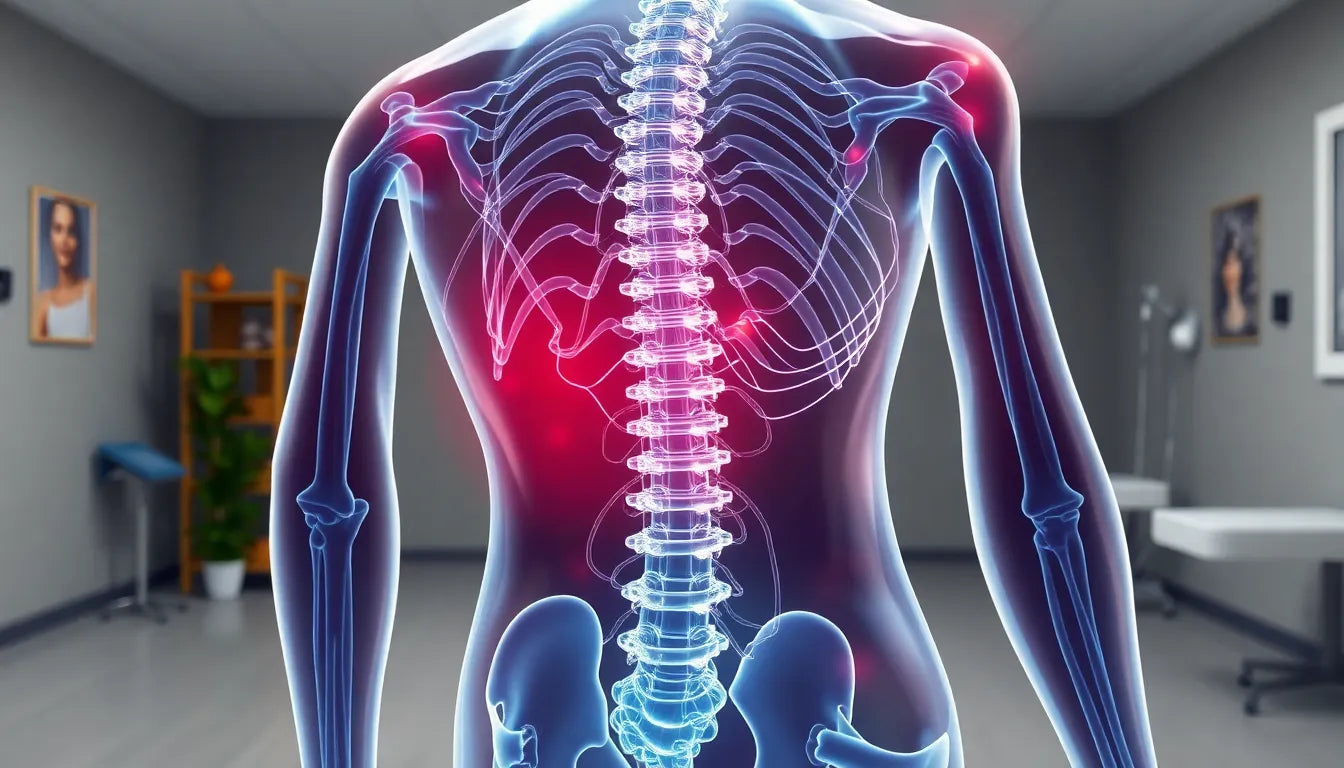Discovering that I had a herniated disc was a moment that I will never forget. It started as a nagging backache that I brushed off as a minor annoyance, but soon escalated into a searing pain that shot down my leg, leaving me bewildered and concerned. The diagnosis was both a relief and a shock—finally, an explanation for the pain, but also the start of an uncertain journey. Like many, I was initially overwhelmed by the fear of what this meant for my daily life and future activities.
understanding herniated discs and their impact
A herniated disc occurs when the soft center of a spinal disc pushes through a crack in the tougher exterior casing. This condition can cause significant discomfort and impact the quality of life, as the displaced disc material can irritate nearby nerves. The prevalence of herniated discs is more common than one might think, affecting a wide range of individuals, often leading to concerns about mobility and the potential need for invasive treatments. The initial fear of surgery or long-term immobility can be daunting, but understanding the condition is the first step toward recovery.
sharing my journey to offer hope and guidance
The purpose of sharing my journey is to provide hope and practical guidance to those who find themselves in a similar situation. My path to healing a herniated disc was not through surgery, but through perseverance and non-surgical methods. I want to emphasize that recovery is possible with patience and the right approach. By detailing my experience, I aim to reassure others that there are effective strategies for managing and overcoming the challenges posed by a herniated disc. This blog post will focus on the steps I took to heal and the lessons I learned along the way, offering a beacon of hope for those navigating this difficult journey.
navigating the path to recovery
Upon receiving my diagnosis, the first step in my journey was seeking expert medical advice. Consulting with a knowledgeable healthcare professional is crucial to understanding the specifics of your condition and crafting a personalized recovery plan. My doctor recommended a conservative management approach, which initially focused on rest and gradually reintroducing activities. This method aimed to allow my body to begin the healing process naturally, without the immediate need for surgical intervention.
practical steps to recovery
One of the most effective strategies I employed was alternating hot and cold therapy. This simple yet powerful technique helped manage inflammation and alleviate pain. Applying cold packs reduced swelling, while heat therapy promoted blood circulation, which is essential for healing. I found that using heat in the morning to loosen stiff muscles and cold in the evening to soothe inflammation worked best for me.
Staying active was another critical component of my recovery. Initially, this meant engaging in low-impact exercises such as walking and swimming. These activities not only improved circulation but also helped maintain my overall fitness without placing undue stress on my spine. As I progressed, I incorporated more targeted exercises, guided by a physical therapist, to strengthen my core and back muscles. This strengthening was vital in reducing pressure on the herniated disc and supporting my spine.
understanding the healing process
Healing from a herniated disc is a journey that requires patience and dedication. The natural healing process can vary from person to person, but most individuals experience significant improvement within 4-6 weeks. During this time, the body works to repair the damaged disc tissue, and symptoms gradually lessen. It's important to recognize signs of improvement, such as reduced pain and increased mobility, which indicate that your efforts are paying off.
Throughout my recovery, I learned to listen to my body and adjust my activities accordingly. This meant avoiding movements that exacerbated my symptoms and focusing on those that promoted healing. Understanding the body's cues and responding appropriately is a key aspect of managing a herniated disc and preventing further injury.
the importance of perseverance and self-care
My journey to healing a herniated disc taught me the value of perseverance and self-care. By committing to a structured recovery plan and making lifestyle adjustments, I was able to overcome the challenges posed by this condition. It's essential to remain hopeful and proactive, as the path to recovery is not always linear. There will be setbacks, but each step forward is a victory.
For anyone facing a similar situation, know that healing is possible. With the right approach, support, and mindset, you can navigate the complexities of a herniated disc and emerge stronger. My experience serves as a testament to the power of non-surgical methods and personal determination in achieving lasting relief.
navigating non-surgical and surgical options
In my journey to healing a herniated disc, I faced the decision of whether to consider surgical intervention. It's essential to understand that surgery is typically reserved for severe cases where pain is unmanageable, neurological deficits are present, or conservative treatments have not yielded results after several weeks. My doctor and I agreed that surgery would be a last resort, focusing instead on non-surgical methods that have shown high success rates. It was reassuring to learn that approximately 80-90% of herniated discs improve with conservative management, which encouraged me to stay the course with my recovery plan.
exploring alternative therapies
Alongside traditional methods, I explored various alternative therapies to aid my recovery. Acupuncture and massage therapy played significant roles in managing my pain and improving my overall well-being. Acupuncture helped alleviate discomfort by stimulating specific points on my body, promoting natural pain relief. Similarly, regular massage sessions reduced muscle tension and enhanced circulation, which was crucial for healing.
Chiropractic care was another adjunctive therapy I found beneficial. Through careful adjustments, my chiropractor helped realign my spine, reducing pressure on the affected disc and providing relief. While results can vary from person to person, these alternative therapies complemented my recovery journey and offered additional support in managing my condition.
reflections and lessons learned
Reflecting on my journey, I have learned the importance of patience, persistence, and self-compassion. Recovery from a herniated disc is not a race but a gradual process that requires listening to your body and adapting to its needs. Each step forward, no matter how small, is a victory worth celebrating. Staying hopeful and proactive in your recovery efforts can make a significant difference in the outcome.
For those facing a similar challenge, remember that healing is possible. With the right approach, support, and mindset, you can navigate the complexities of a herniated disc and emerge stronger. My experience serves as a testament to the power of non-surgical methods and personal determination in achieving lasting relief.
frequently asked questions
What is a herniated disc?
A herniated disc occurs when the soft center of a spinal disc pushes through a crack in the tougher exterior casing. This can irritate nearby nerves, causing pain and discomfort.
How long does it take for a herniated disc to heal naturally?
Most herniated discs improve within 4-6 weeks with conservative treatment, though some cases may take longer.
Can exercise worsen a herniated disc?
While rest is important initially, gentle, low-impact exercises are crucial for recovery. Always consult a healthcare professional before starting any exercise regimen.
When should I consider surgery for a herniated disc?
Surgery is typically considered if there is severe pain, neurological deficits, or if conservative treatments have failed after several weeks.
Are alternative therapies effective for herniated disc recovery?
Some individuals find relief with therapies like acupuncture and chiropractic care, but results can vary. It’s important to consult with healthcare providers to determine the best approach.
Sources
- Sciatica.com. "11 Treatment Options for Herniated Discs."
- Spine MD. "Signs a Herniated Disc is Healing."
- MedicineNet. "What Is the Fastest Way to Heal a Herniated Disc?"
- Cleveland Clinic. "Herniated Disk Overview."
- Spine-health.com. "5 Little-Known Tips for Lumbar Herniated Disc Pain Relief."
- Mayfield Brain & Spine. "Story of Healing without Surgery."
- Premia Spine. "How to Heal a Herniated Disc Quickly?"


















